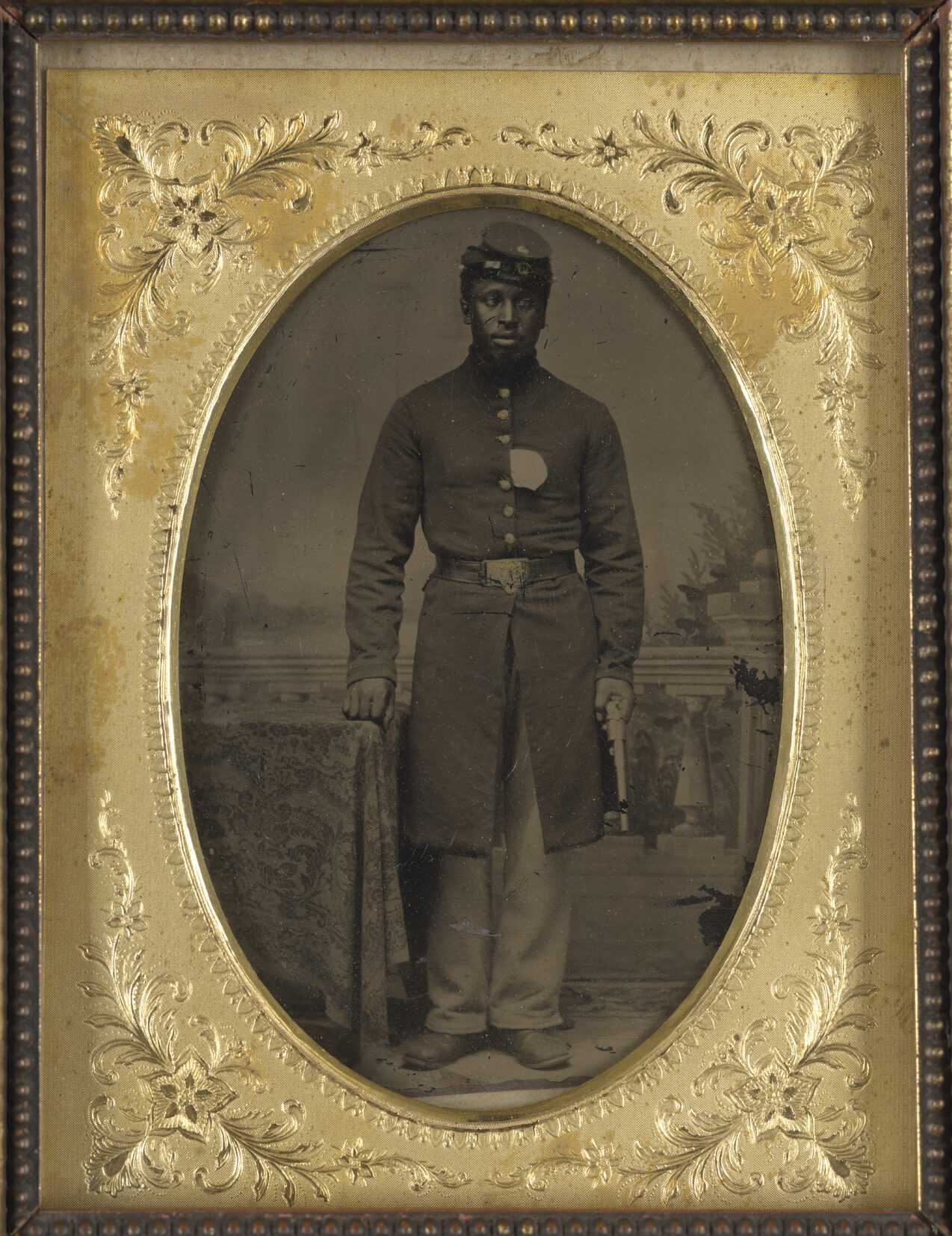Chapter 3
A Divided Nation Fights for Freedom
The election of 1860 was a turning point for the nation. The outcome would determine how the country would move forward regarding slavery. One month after the election of President Lincoln, states began to secede from the Union citing several reasons. Their demands included states' rights to maintain slavery, but also focused on property rights as they cited lack of enforcement of the 1850 Fugitive Slave Act. By April 1861, the Confederacy fired upon Fort Sumter and war was declared upon the United States. President Lincoln did not begin his term with a goal to end slavery. His military goal was to keep the Union together.
African Americans were determined to win their fight for freedom by any means necessary. They self-liberated as they escaped from plantations across the south. On January 1, 1863, the Emancipation Proclamation went into effect declaring that all persons enslaved in the rebelling states were free. It took the bloodiest war in the nation’s history to enforce the proclamation.
Like President Washington during the Revolutionary War, President Lincoln was not initially interested in African Americans serving in the military. However, based on the strategic need for increased military support and influenced by Fredrick Douglass, the president included the recruitment of Black soldiers as a provision of the Emancipation Proclamation. A war to keep the Union together became a fight for freedom and ultimately changed the nation.
The Story of Private Gordon, 1863
Gordon under Medical Inspection, 1863
During the Civil War, Private Gordon’s scarred back became a powerful symbol of the human cost of slavery. After being brutally beaten by an overseer, Gordon escaped slavery in March 1863 and enlisted in the U.S. Army in Baton Rouge, Louisiana. Images documenting Gordon’s U.S. Army medical examination were widely sold and circulated to raise public awareness of the brutality of slavery and to raise funds for the Union’s effort to support self-emancipated Black people.

I have found a large number of the four hundred [new recruits] examined by me to be as badly lacerated as [Gordon].
T. W. Mercer, 1863
Private Gordon from Slavery to Freedom
These images were used to rouse public support for emancipation. Many Americans believed that African Americans were shaped by slavery and therefore unfit for freedom. The artist documented that this was not true.
A Soldier
Documentary images differed from the soldiers’ private portraits, which revealed more about their personal identities. The illustrator posed Gordon standing up to reflect his freedom after enlistment.
Men of the USCT
African American men, like the soldiers in these images, served in the Union Army. Members of the United States Colored Troops posed for photos in their uniforms to commemorate their service in the fight for freedom.
